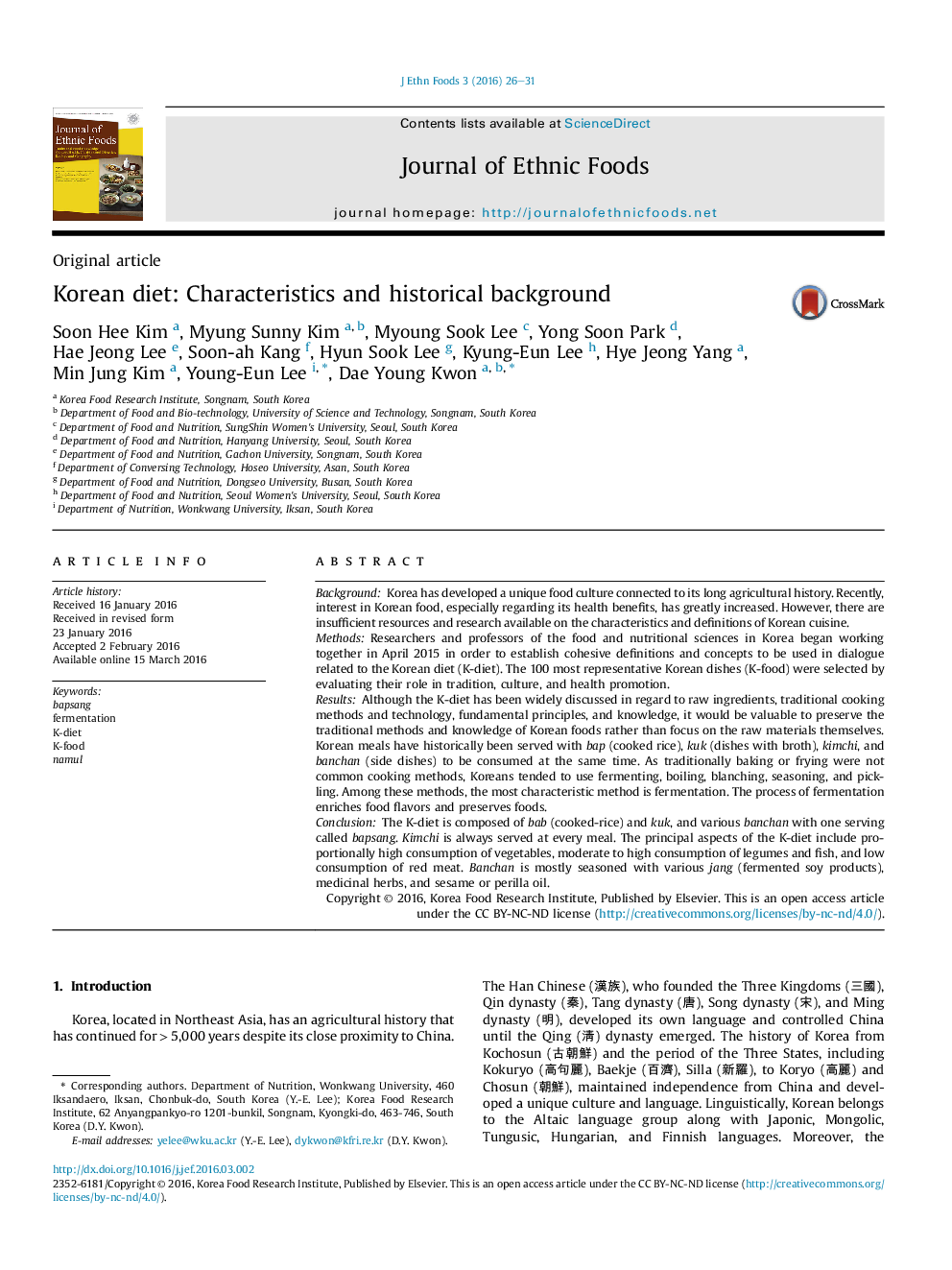| Article ID | Journal | Published Year | Pages | File Type |
|---|---|---|---|---|
| 2688552 | Journal of Ethnic Foods | 2016 | 6 Pages |
BackgroundKorea has developed a unique food culture connected to its long agricultural history. Recently, interest in Korean food, especially regarding its health benefits, has greatly increased. However, there are insufficient resources and research available on the characteristics and definitions of Korean cuisine.MethodsResearchers and professors of the food and nutritional sciences in Korea began working together in April 2015 in order to establish cohesive definitions and concepts to be used in dialogue related to the Korean diet (K-diet). The 100 most representative Korean dishes (K-food) were selected by evaluating their role in tradition, culture, and health promotion.ResultsAlthough the K-diet has been widely discussed in regard to raw ingredients, traditional cooking methods and technology, fundamental principles, and knowledge, it would be valuable to preserve the traditional methods and knowledge of Korean foods rather than focus on the raw materials themselves. Korean meals have historically been served with bap (cooked rice), kuk (dishes with broth), kimchi, and banchan (side dishes) to be consumed at the same time. As traditionally baking or frying were not common cooking methods, Koreans tended to use fermenting, boiling, blanching, seasoning, and pickling. Among these methods, the most characteristic method is fermentation. The process of fermentation enriches food flavors and preserves foods.ConclusionThe K-diet is composed of bab (cooked-rice) and kuk, and various banchan with one serving called bapsang. Kimchi is always served at every meal. The principal aspects of the K-diet include proportionally high consumption of vegetables, moderate to high consumption of legumes and fish, and low consumption of red meat. Banchan is mostly seasoned with various jang (fermented soy products), medicinal herbs, and sesame or perilla oil.
